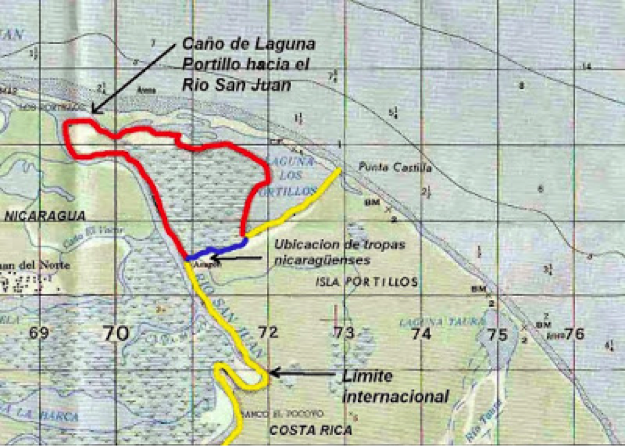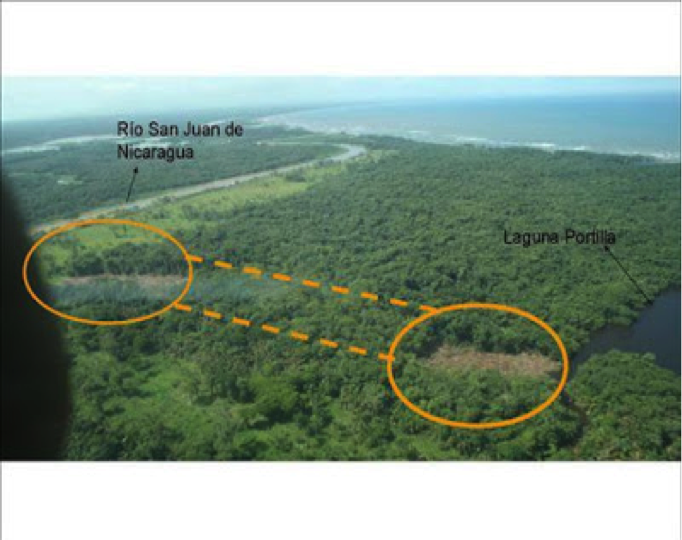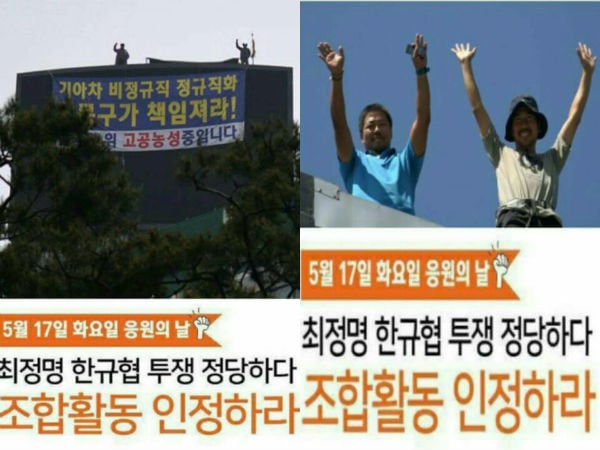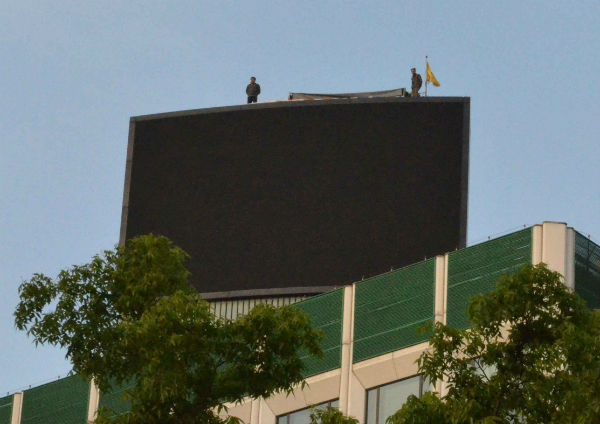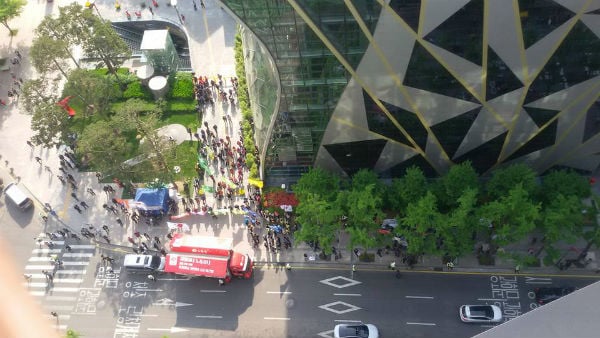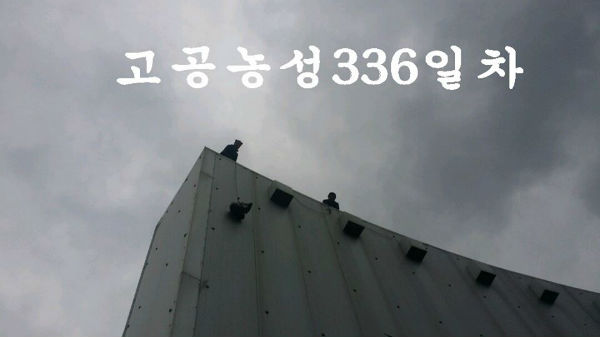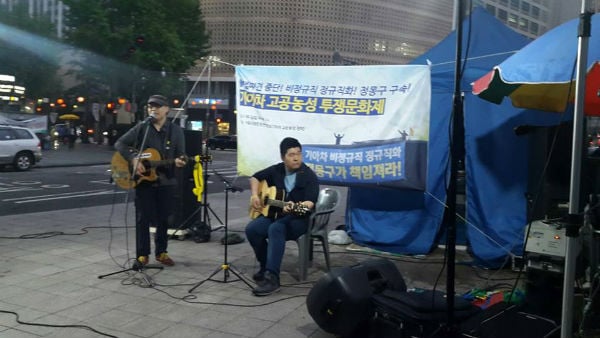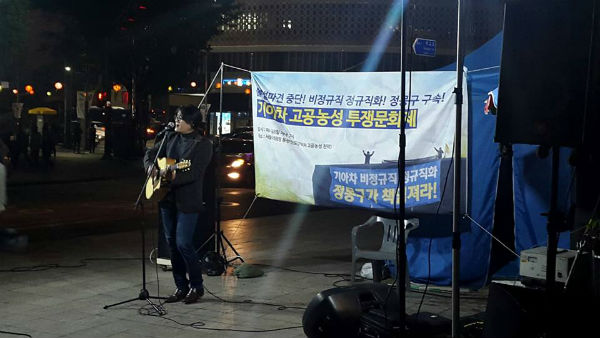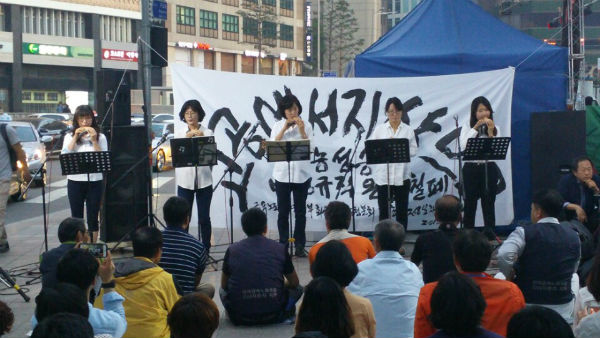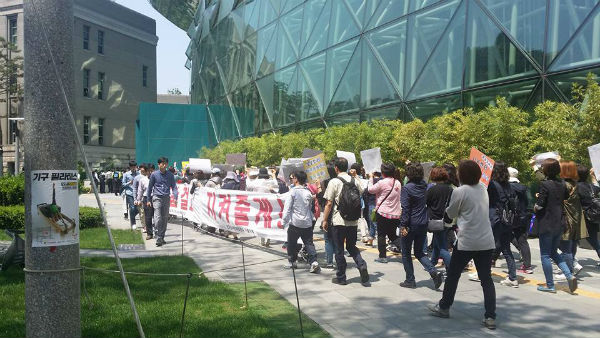Cambodia has been through a period of untold upheaval, which has resulted in the restructuring of its economy. Neoliberalism, or free market economics, has been introduced into Cambodia since the end of the Cold War, and more aggressively since the UNTAC began to administer the country in 1992. Subsequently, there have been dramatic consequences in the way Cambodia is administered, particularly in regard to government expenditure. As a result of neoliberal reforms, Cambodia’s government spending has remained extremely low, which has translated to insufficient investments in the education sector. Furthermore, neoliberal ideology promotes market based activities, meaning teachers in Cambodia, as a result of low spending in the education sector, receive an unsustainable wage and are forced into offering private tuition to their students. Inequalities in the quality of education that students can expect to receive, including levels of attainment, based on whether their households can afford private tutoring or not, have emerged as a result. This situation translates deeper into Cambodian society, where those who attain well in school are more likely to be able to demand better wages when in work. Significantly, income inequality has increased in Cambodia since the introduction of neoliberalism.
1 Chapter One: Introduction
This dissertation seeks to understand the social consequences of neoliberal reforms in Cambodia. Given that the subject of neoliberalism is vast in any context, a literature review was completed in order to find an area which required further investigation within the framework of neoliberalism in Cambodia. Following the analysis of literature surrounding the social consequences of neoliberal reforms in Cambodia since the 1990s, a gap within the literature was identified. Subsequent to the review of the relevant literature, it is clear that there is a lack of research surrounding the neoliberalisation of Cambodia’s education system and whether this has impacted on inequalities within the country. This dissertation will answer the following question in order to gain a deeper understanding of the void found within the literature; How have neoliberal structural reforms affected the education system in Cambodia, and how has this impacted on inequalities within the country since the 1990s?
1.1 Aims of Research
This thesis aims to analyse how neoliberal reforms have impacted on Cambodia’s population, specifically to understand how inequalities in outcomes of children’s education has been affected. The project aims to understand how neoliberal structural reforms within the Cambodian economy have affected how children have been impacted in ways relating to their educational attainment. Moreover, the paper will seek to understand how impacts on children’s educational attainment effects their socio-economic status later in life based on data relating to income inequalities within Cambodia. Consequently, the project aims to understand how the neoliberalisation of the Cambodian economy has affected the country’s education system and whether this, as a result of the policies associated with such neoliberal reforms, has any bearing on the equity outcomes of those who depend on the state for their education.
In 1991, after many years of violent conflict within Cambodia and the surrounding region, the United Nations Security Council (UNSC) established a transitional authority under the auspice of the United Nations Transitional Authority in Cambodia (UNTAC), which effectively governed the country for two years beginning in 1992 (Gottesman, 2003, p.342-345). The UNTAC was mandated to control and administer many components of the Cambodian state and to deal with many of the issues associated with a country that had suffered from years of violent conflict, including; the Military, Police, Elections, Economy, Civil Administration, Rehabilitation, Human Rights and Repatriation (UNRISD, 1993, p.8). One of the main components of the UNTAC was to ‘ensure a neutral political environment conducive to free and fair general elections’ (Peace Accords Matrix, Article 6, 2015). Given that the United Nations (UN) has, since the beginning of the 1980s, subscribed to the ideology of neoliberalism (Free market economics, achieved through privatisation, deregulation and liberalisation) it is unsurprising that the Cambodian People’s Party (CCP), after winning the election organised by the UN were committed to following the same ideology (Gottesman, 2003, p. 345). In fact, Article 56 of the Cambodian Constitution (Cambodia, 2010) states that the country is committed to enabling a free market economy.
1.2 Theoretical Underpinnings
1.2.1 Neoliberalism
This paper will use different theoretical underpinnings in order to explain and understand the issues relating to matters of equity within the Cambodian education sector, providing an enhanced comprehension of how this translates in Cambodia’s society. The theory of neoliberalism will provide the focal point in this paper in order to understand how Cambodia’s education sector has been impacted since the early 1990s, and how this has played out in issues of equity within the country’s population. Neoliberalism is a theory which began to emerge in the 1970s as an alternative to variants of the Keynesian approach of development economics, according to Willis (2011, p.52). The Keynesian theory of economics advocated state intervention at a national level, rather than allowing market forces to determine outcomes, in order to more efficiently utilise resources, better providing for societies. Neoliberalism, on the other hand, came about as a result of a number of economists challenging Keynesian theory, suggesting that state intervention was creating inefficiencies, leading to slower economic growth. The key components of neoliberalism include reductions in government expenditure, privatisation of state owned assets, reduction of government regulation, increased significance of the free market and an emphasis on individualism, or individual responsibility, according to Payne and Phillips (2011, p,87). Harvey (2005, p.88) claims that Thatcher and Regan adopted the tenets of neoliberalism in the 1980s after both the UK and US experienced difficult economic times, but the policies adopted by both governments resulted in high unemployment mixed with, as a result of the cuts in social welfare, a reduction in the quality of life for many and increasing income inequality.
John Williamson coined the term ‘Washington Consensus’ is his writings concerned with economics at the end of the 1980s, according to Marangos (2009, p.350). The Washington Consensus refers to the situation when the world’s dominant international financial institutions (IFIs), the International Monetary Fund (IMF) and World Bank, which are located in Washington, USA, agreed upon a set of economic reforms, aimed at increasing economic growth, for Latin American countries which were experiencing economic strain in the 1980s. The Washington Consensus assumed that the Keynesian approach of development, which had influenced many South American country’s leaders, who had implemented protectionist policies such as Import Substitution Industrialisation (ISI), had come to an end (Willis, 2011, p. 77). The phrase has evolved over time, but is contemporarily understood to refer to the IMF and World Bank and their methodology (Serra, Spiegel & Stiglitz, 2004, p.3), who have adopted a neoliberal development approach aimed at privatising state owned assets, liberalising economies (opening up to foreign investment), emphasising the free market, and reducing the role of the state. Not only were the World Bank and IMF associated with the Washington consensus because of the geographical locations of their head offices, but because many argued that their aims are a reflection of the interests of the United States, according to Woods (2011, p.251). The IMF and World Bank were formed at the Bretton Woods conference in 1944 with the aim of providing a framework for a stable post-war economy (Gore, 2000, p. 789). Since their formation the World Bank and IMF have adopted different economic development models but, since the beginning of the 1980s, have embraced the neoliberal development model.
1.2.2 Structural Adjustment Programmes
In order for the World Bank and IMF to implement neoliberal policies throughout the world they have used, since the end of the 1970s, Structural Adjustment Programmes (SAPS). SAPs are often agreed upon by national governments in order to receive financial support or loans from the Bretton Woods Institutions, according to Willis (2011, p.57). SAPs reflect the neoliberal free market ideology of both the Ragan and Thatcher (Craig and Potter, 2006, p.55) governments of the 1980s, and their implementation have demonstrated how the Global North has been able to influence the economies of the Global South. SAPs arose as a result of many governments in the Global South becoming unable to keep up with interest rate payments on debt borrowed from commercial banks in the 1970s. In response to this situation the IMF and the World Bank offered loans to countries suffering from balance of payments problems. In order to secure loans from the IMF and World Bank recipient countries were required to ‘structurally adjust’ or accept ‘conditions’ set out by the two institutions, which were deeply rooted in neoliberal ideology, according to O’Brian and Williams (2010, p.193).
Governments that adopt SAPs are required to introduce a number of different policies in order to reduce the role of the state in the running of the economy. SAPs comprise of two main policy groups, as Stiglitz (2002, p.14) highlights; i) stabilization measures, and ii) adjustment measures. Stabilisation measures included freezing government spending on public-sector wages, reducing governments spending (including on health and education) and currency devaluation. These measures were supposed to stabilize recipient economies, which would then lead onto a number of structural measures being introduced. Structural measures include the opening up of the national economy to foreign direct investment (FDI), tax system reform, which often lead to reduced taxes for the wealthy and large multi-national corporations (MNCs) and privatization of state-owned assets, such as electricity production, postal services or transport networks. According to Stiglitz (2002, p.14) the Bretton Woods institutions took a simplistic view when implementing SAPs, assuming that all countries, regardless of their differing economic problems, all needed the same structural reforms. Thomas (2008, p.424) claims that the IMF and World Bank’s blanket treatment of different countries with different problems was inappropriate and resulted in an inability to deliver economic growth, while having detrimental environmental and social consequences.
SAPS are now known to have had very negative outcomes in a great number of places where they have been implemented (Willis, 2011, p.58). Neoliberal policies introduced as part of SAPs, such as reducing the size of the state, removing barriers to foreign investment and currency devaluations, in many cases, have had serious consequences. Although, in some cases, SAPs may have had the desired economic stabilization outcomes, there have been severe consequences in terms of human welfare where they have been implemented. Thomas (2008, p.431) argues that IMF and World Bank SAPs implemented throughout the 1980s and 1990s reduced the availability of health care and education services as public expenditure was reduced. The privatization of public utilities meant that as well as reduced health care and education, user fees were introduced for necessities such as water. Bonal (2002, p. 7) states that SAPs have had very specific negative outcomes in countries where adjustments have taken place, explaining that reductions in per capita expenditure on education has had damaging consequences. Increases on student absenteeism, failing schools and reduced access to primary and secondary education are all symptomatic of reductions in education expenditure as a result of SAPs. The reductions in salaries or continuing low salaries for teachers are a particularly pertinent negative consequence of SAPs. Teachers who receive low salaries are often forced into supplementing their income by other means, for example, charging students for parts of their education which is essential if they are to pass their examinations (Bray and Bunly, 2005, p. 75).
Willis (2011, p.58) states that there was a growing awareness of the negative consequences associated with IMF and World Bank SAPs towards the end of the 1990s. In response to the this negative publicity the Bretton Woods institutions decided to remould the SAPs, which involved giving them new names and paying more attention to the needs of the poorest people where the policies were implemented. The new ‘Poverty Reduction Strategy Papers’ (PRSPs) are, however, often thought to include the same damaging elements of SAPs and have resulted in limited improvements, according to Shah (2013).
1.2.3 Inequalities
This paper, which focusses on the social consequences of neoliberal reforms, will investigate how such reforms have impacted on inequalities within Cambodia’s education sector. Inequality within countries is often understood as the differing share of wealth or income that people living within a country experience, according to Greg, Hulme and Turner (2007, p.11). Inequality is not only relating to the share of wealth, but includes, among other things, the unequal level of access to education and health care services members of a society can expect to receive. Wilkinson and Pickett (2009), in their book The Spirit Level, argue that large inequalities within countries not only damage the ‘poor’ but have negative outcomes for everybody within a given society. However, on an individual level, rather than on a societal level, it is clearly the poorest people within a society who are burdened more severely by the effects of large inequalities rather than the most wealthy, as Platt (2011, p.132) explains.
Income Inequality has severe impacts on life expectancy, educational attainment, infant mortality, social mobility, violence within societies, levels of trust between different socio-economic groups, obesity and imprisonment rates, according to Wilkinson and Pickett (2009, p 19). Therefore, poor people within societies which suffer from higher levels of inequality can expect to live shorter lives, receive a lower standard of education, be more likely to engage in illegal activities and be at risk of being subjected to, or involved in violent behaviour than more wealthy members of society.
Income inequality affects the ability of members of a society to access and take advantage of the services which lead to a more prosperous life. Education plays a significant role in a person’s ability to earn money. Those who are able to achieve the highest educational attainment are more likely to be able to demand a better standard of living and those who cannot are not. In their study, Wilson and Pickett (2009, p.161) conclude that levels of public expenditure on education impacts on inequalities within countries. Where public expenditure on education is high, compared with levels of private expenditure, there is a higher degree of social mobility. Consequently, there is a correlation between levels of public expenditure on education and levels of inequality within countries. This is particularly pertinent given that neoliberal policies favour the reduction in size of the state, which includes cutbacks in spending on social services, health care and, significantly, education. The Gini Coefficient measure of income inequality will be used in this paper to determine the effects of neoliberal reforms on income equity within Cambodia since 1993. Todaro (1997, p.145) explains that the Gini coefficients are cumulative measures of inequality which vary on a scale of 0 (absolute equality) to 100 (absolute inequality).
1.2.4 Millennium Development Goals
The Millennium Development Goals (MDGs) consist of eight goals set out at the United Nations Millennium Summit in September 2000. The second goal, to achieve universal primary education, is particularly pertinent in the context of this dissertation. This paper will analyse the effects of the goal to achieve universal primary education and how this has impacted on Cambodia’s society. Given that the United Nation’s (2014, p.16) target was to achieve this particular goal by the end of 2015; a perfect opportunity has arisen to assess the implications of this particular MDG in the context of the neoliberal agenda.
The United Nations Development Programme’s (UNDP) stance regarding government intervention within economies contradicts that of the IFIs, such as the World Bank and IMF. The UNDP recognises that neoliberal policies, such as privatisation of public services and reductions in government expenditure, can be detrimental to members of society who depend on social services. In the Human Development Report (UNDP, 2003, p. 114) the UNDP acknowledges that user fees for education discourage poor families from sending their children to school. Consequently, this is not conducive to realizing universal primary education and is a factor which is likely to result in the failure of this particular MGD. The UNDP (2014, p.85) argue that universal basic education diminishes the disparity in the quality of education children from wealthy and poor backgrounds receive. On the subject of user fees, such as children having to buy their education, the UNDP claims that access to universal basic education should be free to all and that the quality and quantity of education should not be linked to a person’s ability to pay. Therefore, governments have a responsibility to provide universal basic education to all without users being charged in the process, if universal basic education is to be achieved.
The United Nations Millennium Project (2005, p. 28) claims that for governments to rely solely on the market, avoiding public expenditure, will not lead to wealth ‘trickling down’ from top to bottom, as is often cited as an intended consequence of neoliberal development. Therefore, the United Nations Millennium Project encourages both marketand government in order for a society to achieve the MDGs. Furthermore, it states that it is misrepresentative to give emphasis to the importance of economic growth in the context of achieving the MDGs. Greig, Hulme and Turner (2007, p. 155) point to the experiences of many poorer countries who have had their economies structurally adjusted by the IFIs, as a condition of securing loans, as an example of policies which have relied on the market while overlooking the needs of populations. In such circumstances governments are required to redress deficits in their budgets, but rather than increase taxes on the wealthy, reductions in expenditure on health care and education are often seen as a priority. It is policies such as this, which reflect neoliberal ideology, that disproportionately impact on poor communities and hinder the chance of achieving the MDGs.
Regarding the MDGs, Unterhalter (2013, p.5) claims that although the MDGs have increased enrolment rates in many developing countries, which has contributed to the move towards universal primary education, there are a number of caveats which counter the claim that the MDGs are proving successful. Unterhalter claims that the focus on universal primary education has come at the expense of the quality of education. For example, although more children might be in school, they are often likely to be in classes which have dramatically increased numbers of students with the same amount of teaching staff, leading to a reduction in the quality of education. Furthermore, while many developing countries have been focused on providing universal primary education, attention has moved away from other educational sectors, at the expense of secondary, higher and adult education. Heyneman (2009) claims that the World Bank bears some responsibility for this due to moving donor focus towards primary education, while fostering an unwilling attitude towards assistance in other departments of education. Given that the IFIs neoliberal policies, implemented through SAPs, are often responsible for the reductions in education budgets in many developing countries who have adopted such restructuring measures, it is clear there has been a conflict between different UN agencies (Untehalter, 2013, p.16). Therefore, it is likely that a lack of consensus between the IFIs and other UN agencies, regarding the importance of providing quality education and increasing education budgets, has been a factor in the inability to meet the MDG so far.
2 Chapter Two: Reflective Discussion, Methodology and Dissertation Structure
2.1 Reflective Discussion
The author of this dissertation has selected the topic of study for a number of reasons. Firstly, the author has spent several years living in South-East Asia and has first-hand experience of the issues which this dissertation is seeking to understand; those being the impacts of neoliberal reforms and their resulting outcomes with regard to inequality. The effects of neoliberalism have been of particular interest throughout the author’s degree, prompting a desire to further investigate the impacts of such policies, in relation to inequality, within Cambodia.
This dissertation draws on a large amount of literature in order to make conclusions regarding the equity implications of neoliberal reforms in Cambodia. A number of key readings from different themes (neoliberalism, inequality, MDGs and Education in Cambodia), chosen due to their relevance to the selected topic, provide the backbone for this dissertation from which the final conclusions have be drawn. Springer (2010) provided a detailed understanding into the history of Cambodia’s neoliberalisation, describing how the country started to undertake neoliberal structural reforms, simultaneously with the end of the cold war and the subsequent involvement of the UNTAC. Wilkinson and Pickett (2009) and Greig, Hulme and Turner (2007) in their respective books provided the author with an insight into contemporary issues surrounding global and domestic inequalities related to market led neoliberal development. Furthermore, Greig, Hulme and Turner (2007) elaborate on the implications of the MDGs and the challenges faced by the countries adopting such goals. The MDGs are particularly pertinent in Cambodia’s case with regard to the education system, as they affect the quality of education provided by the state, as mentioned previously. Brehm and Silova (2014), Lall and Sakellariou (2010) and Bray and Bunly (2005) have provided invaluable information relating directly to Cambodia’s education sector. All of their writings use a combination of qualitative and quantitative, primary and secondary research relating to household financing of primary education, the evolution of private fees for tutoring after the UNTAC and equity implications of private tutoring in Cambodia. All of the above literature has shed light on the issues that they aim to highlight, although none are directly focussing on the neoliberalisation of Cambodia’s education system and the related equity implications. The author has used the mentioned literature, and multiple other relevant sources, in order to formulate an answer to the question posed above.
2.2 Methodology (Research Methods)
This paper has been compiled using a mixed methods approach, including both Qualitative and Quantitative data in order to draw conclusions. The data and information used has been drawn only from secondary sources relating to the research topic. The materials gathered for this research have come from a number of different sources. Literature relating to the subject has been utilised, all of which have provided relevant qualitative information in order to draw conclusions relating to the research. Reports from a number of international institutions have contributed to the research, providing both qualitative and quantitative data, helping to focus on the outcomes of neoliberal reforms within Cambodia. However, it must be noted that many international institutions, including the World Bank and International Monetary Fund (IMF) subscribe to the theory of neoliberalism. Governmental reports have made up a proportion of the quantitative data used in this research paper, drawing statistical data concerning the subject matter. Peer-reviewed journal articles have provided a significant amount of information included in this study, all of which have been accessed through the university library system, including platforms such as EBSCO Academic Search Complete, JSTOR and Taylor & Francis Journals Complete. The specific range of sources has been selected as a result of their relevance to this particular dissertation, and has enabled the author to present the following thesis.
2.3 Dissertation Structure
This paper will take the following structure. Chapter three will focus on giving a historical background of Cambodia and neoliberal structural reforms within the country. Firstly, an introduction to the historical background of Cambodia will be provided, endowing the reader with the necessary knowledge and understanding of the pertinent issues in the country’s history relating to the dissertation. Secondly, Cambodia’s neoliberal structural reforms will be examined, giving the reader an understanding of when and why such reforms have been implemented, and how this has impacted those living in the country. Moving on, chapter three will assess more closely how Cambodia has implemented neoliberal reforms. Firstly, the section will focus on the international financial institution’s (IFIs) involvement in restructuring the Cambodian economy. Secondly, IFI implemented Structural Adjustment lending and the associated conditionality will be examined, seeking to determine what bearing they have had on the Cambodian economy and how this has reflected on the education system. Finally in chapter three, an analysis of Cambodia’s self-imposed adjustment will be conducted, with an emphasis on the extent to which the country was ready to open its economy regardless of involvement from the IFIs.
Chapter four will consist of the analysis of the implications of neoliberal reforms in Cambodia and how this has impacted on inequalities in the country. Firstly, an analysis of the effects that neoliberal policies have had on government expenditure will be undertaken, seeking to find how this has impacted on the population. Secondly, a closer look at reductions in government expenditure will focus on the repercussions for the education sector, where the impacts of Cambodia’s commitments to the MDGs, simultaneous with the impacts of neoliberal policies, will be examined. Next, the effects of neoliberal policies on education will be scrutinised, exploring whether informal fees and larger class sizes are impacting on inequalities in levels of attainment outcomes for students depending on socio-economic status. Moving on, Gini coefficient data will be used in order to gain a deeper understanding of the levels of income inequality within Cambodia since the introduction of neoliberal economic reforms in the early 1990s, and how this is related to the level of education members of Cambodian society have received. Chapter four will finish by assessing the overall equity implications of neoliberal reforms on the Cambodian education sector. Finally, Chapter five will offer conclusions based on the findings of this dissertation.
3 Chapter Three: Historical Background of Cambodia and Neoliberal Reforms
This chapter will give an outline of Cambodia’s history since receiving independence from France in 1953 and will investigate how neoliberal structural reforms have been implemented. The first part of this chapter is dedicated to exploring Cambodia’s history and the first phase of the country’s economic reforms. The second part of this chapter is devoted to further understanding how Cambodia’s economy has been exposed to neoliberal reforms. The UNTAC’s impacts on the country will be analysed, giving an understanding of how the country undertook its second economic reform, which further imbedded neoliberal ideology within Cambodia.
3.1 Cambodia Before Adjustment
Since Cambodia received its independence from France in 1953 the country experienced untold upheaval. Cambodia has been involved in the Vietnam War, leading to hundreds of thousands of deaths at the hands of United States (US) forces, according to Springer (2010, p. 1). Following this, between 1970 and 1975, Cambodia was ruled by a US-backed military Junta (Fergusson and Masson, 1997, p.91), which was played out in the backdrop of the Cold War, while the United States were trying to gain influence in the region. Cambodia’s people then suffered hugely at the hands of the Khmer Rouge, led by Pol Pot, who introduced communism to the country, ruling between 1975 and 1979 where every aspect of the Cambodian people’s lives were controlled by the state . Guo (2006, p.49) claims that Pol Pot had set out to implement an ambitious economic experiment which attempted to achieve a self-reliant communist state dependent on agricultural production, which failed to provide enough food for the country’s population. By the time the Khmer Rouge were overthrown in 1979 the regime had been responsible for the deaths of nearly two million people in what has been named the ‘killing fields’, according to Vannath (2002, p.303). Furthermore, the fall of the Khmer Rouge was brought about by the invasion of Vietnamese forces, which were responsible for the implementation of a Vietnam-backed government, bringing about more upheaval for Cambodia’s people. Fighting within the country continued between the new government forces and the Khmer Rouge.
In 1981 parliamentary elections resulted in the pro-Vietnamese Kampuchean People’s Revolutionary Party gaining power, which the international community refused to recognise, because of its commitment to communism. Hen Sen became Prime Minister in in 1985, while intense fighting continued within the country, as a result of the bipolar tensions created by the Cold War, which Cambodia had become involved with. In 1989 Vietnamese troops left Cambodia and Hen Sen, in response to the collapsing communist world (East Germany), began taking small steps towards introducing market reforms (Kilmister, 2004, p.310), which resulted in the reversal of state controls. This issue was compounded with the loss of support from the Soviet Union who were themselves implementing market reforms (perestroika), according to Buszynski (2013, p.88) and were more interested in rebuilding their relationship with China than dealing with time and resource consuming issues in Southeast Asia (Gottesman, 2003, p.277). Following the breakdown of the Soviet Union and the loss of support that was received by from them, Cambodia began to experience severe financial difficulties by the end of 1989, as Gottesman (2003, p.316) explains, which promoted the rate at which the Cambodian government implemented economic reforms in the country, opening up the country to neoliberal ideology and a liberalised economy.
Cambodian authorities began to implement economic reforms throughout the 1980s under the guidance of Hen Sen, which had been prompted by structural changes taking place elsewhere in the socialist world, according to Gottesman (2003, p.276). This period, Hughes (2003, p.2) explains represented the first phase of Cambodia’s transition away from the communist experiment and towards a free market economy. The Soviet Union had begun a process of economic reforms under Mikhail Gorbachev, where state enterprises were beginning to be exposed to market forces after having been granted a limited level of autonomy, which highlights the transition of the Soviet economy away from communism and towards the free market, as Willis (2011, p. 90) explained. Given that the Soviet Union was withdrawing their support for many socialist countries, Cambodia was in effect being sent the message to stand on its own feet and Gorbachev encouraged the Cambodian government to improve relations with their capitalist neighbours in the Association of South East Asian Nations (ASEAN) region, according to Hughes (2003, p.2) . This stance was echoed by Thailand’s Prime Minister Chatichai Choonhaven who encouraged Cambodia to ‘turn battlefields into market places’, as Szalontai (2011, p.155) highlights. Hughes (2003, p.40) identified that as a consequence of the departure of Soviet aid towards the end of the 1980s, Cambodia experienced a huge financial deficit, which contributed to leaders having to accept that a structural transition was inevitable. Furthermore, resources which the Cambodian government had relied on, such as oil, vehicles, building materials and medicines had ceased to be supplied from the Soviet Union. Of particular concern was Cambodia’s lack of fuel, which was needed in order to continue the ongoing military campaign. Subsequently, as Gottesman (2003, p.316) states, Hen Sen was forced to look at other areas for fuels and had little alternative but to turn to private Thai companies to supply fuels to the country, which further highlights Cambodia’s economic transition.
Many Cambodian students living in Moscow were being introduced to ideas of Perestroika (Restructuring) and were bringing these ideas back with them to Cambodia, which increased the rate at which the country adjusted towards a market based economy, Guo (2006, p.50) argues. Additionally, from the end of the 1970s, state cadres had been unofficially permitted to partake in market based wealth generating activities in order to supplement their incomes. As a consequence of this, state doctors and teachers, for example, began to provide private consultations and lessons in order to generate income. This situation increased calls for economic reforms within the country, as those who were enjoying supplemented incomes had an incentive to move towards a free market economy, according to Gottesman (2003, p.281). Significantly, these wealth generating activities conducted by state employees have had profound implications with regard to Cambodia’s education sector as the practice of teachers charging fees has continued until now (Bray and Bundy, 2005, p.40). However, currently teachers wages are so low within Cambodia that they are unable to sustain themselves or their families and are subsequently put in a position where they are required to charge fees to students in order to feed their families, as Bray and Bunly (2005, p.81) explain.
3.2 Historical Background of Neoliberal Reforms in Cambodia
On 23rd October 1991, in an attempt to bring peace and stability to Cambodia, the Paris Peace Agreements (PPA) were signed by 19 governments and the opposing factions within Cambodia, which represented the second phase of Cambodia’s transition towards a free market economy, suggests Hughes (2003, p.2). Upon signing the agreement it was decided that the United Nations would send a mission to the country which would oversee the proposed ceasefire, supervise the drafting of a new constitution and prepare Cambodia for democratic elections (OHCHR, 2011).
The stated aim of the UNTAC was to disarm the remnants of the conflict that had been ongoing for over two decades and to bring about a ceasefire with the intention of creating a neutral environment in order for political parties to contest “free and fair” elections. Once elected, the new government, as a condition of the PPA, was tasked with drafting a new constitution which enshrined human rights and basic freedoms, according to Hendrickson (1998, p. 44). Along with these specific aims of the UNTAC, it has also been noted by Springer (2010, p.5) that the mission furthered the free market neoliberal reforms which the government prior to the UN’s involvement had been adopting. Springer (2010) describes how these reforms have intensified social problems that had already existed within the country, such as low levels of education, poor health care and inequality. Given that the United Nations and its affiliated financial institutions, the World Bank and IMF, have adopted neoliberal reforms as the best means of achieving development aims, which have been achieved through the implementation of SAPs, it is unsurprising that such a situation has arisen. As Scholte (2005, p.11) suggested in a report for the United Nations Research Institute for Social Development, ‘Marketization through privatization, liberalization and deregulation has not fulfilled—and shows little sign of fulfilling—a panglossian dream of maximal well-being for all humankind.’
Prior to the arrival of the UNTAC in 1992 a separate mission was sent to Cambodia under the auspice of the United Nations Advanced Mission in Cambodia (UNAMIC) in 1991, which was put in place in order to preserve the ceasefire and prepare the country for the arrival of the UNTAC (Curtis, 1993, p. 7). On 15 March 1992 the UNTAC arrived in Cambodia and began its work while taking over the duties of the UNAMIC. The UNTAC, at its peak, consisted of more than 20,000 staff from around the globe, the vast majority of whom were military personnel, while a large numbers were also operating in the country in order to oversee the election process (UN, 2014). While the UNTAC was governing the country there was a distinct lack of investments or loans made available for the country’s rehabilitation, with many aid donors, including the World Bank and IMF, choosing to wait for the outcome of the election process before committing large sums into Cambodia (UNRISD, 1993, p.11). However, of the investments that were made in the country during the UNTAC mission many were committed to longer term infrastructure projects, while leaving the social sector, including education, severely underfunded. This pattern has consistently led to worsening social conditions in many of the countries where neoliberal reforms have been implemented (Scholte, 2005, p.11). The UNTAC’s mission culminated in an election being held in May 1993 (Duffy, 1994, p.2). Considering that Cambodia’s people had been subjected to such violence, and were still being intimidated by government and opposition forces, the turn out in the election was high. As Duffy (1994, p.2) explains, of those registered to vote more than 90 percent made it to the ballot boxes and cast their vote.
3.3 International Financial Institutions involvement in Cambodian Reforms
Upon the completion of elections within Cambodia in 1993, when a coalition government was formed between the Front Uni National pour un Cambodge Indépendent, Neutre, Pacifique et Coopératif (FUNCINPEC) and the Cambodian People’s Party (CPP), international aid and loans became the responsibility of the newly elected government (Hughes, 2003, p.2). Although, in the election which took place a majority government was not formed and a formal power-sharing agreement was agreed, with two co-Prime Ministers running the country. Hen-Sen, who was one of those co-prime ministers, has, in effect, been Prime Minister of Cambodia since 1985 until today. Subsequent to elections being held in Cambodia in 1993 the government committed to implement neoliberal structural reforms, according to Springer (2010, p.5), which is consistent with the self-imposed structural reforms Hen-Sen had already started to implement as a response to the collapse of the Soviet Union and the communist world. Consequently, Cambodia’s new government included in Article 56 (Cambodia, 2010) of its constitution that the country would commit to fostering a free market economy, essentially signing the country’s reforms into law. Ojendal (2006, p.194) claims that although the stated aim of the UNTAC was to bring about elections and to create a peaceful society, but rather the key objective of the mission was to establish Cambodia as a liberal economic state, fully incorporated into the international economy. The IMF and World Bank appear to have convinced the country’s new government that, with the offer of conditional loans or Structural Adjustment Programmes (SAPs), neoliberal policies would be the correct path for the country to take.
3.4 Structural Adjustment and Conditionality Implications in Cambodia
Given that the bipolar system the world experienced during the Cold War had come to a close, those countries which had relied on Soviet development assistance had little alternative but to accept assistance from the West’s now dominant IFIs, the World Bank and IMF, and the conditionality which came with it, according to Springer (2010, p.30). Effectively, Cambodia had no alternative but to accept World Bank and IMF SAPs, which were designed in order to liberalise economies. Such liberalisation, as mentioned above, involve reducing the state’s involvement in the working of the economy, reductions in government spending (including health and education), privatization of state owned assets, wage freezes, deregulation of industry and the removal of subsidies from, for example, public utilities and transport. Almost as soon as the UNTAC mission left Cambodia in 1993 the newly formed government adopted SAPs as a condition of loans secured from the World Bank and IMF in accordance with the country’s new constitution, explains Springer (2010, p.76). Soon after the adoption of SAPs, Cambodia was receiving so much foreign assistance from outside donors that it had been drawn into a pattern of dependency, which resulted in the country being less able to negotiate the conditions attached to loans (Hendrickson, 2011). The IMF and World Bank have continued to promote SAPs in Cambodia, sometimes under different names (Enhanced Structural Adjustment Facility, Structural Adjustment Credits), since the 1990s. Cambodia has experienced problems as a consequence of SAPs, which has stemmed from the associated conditions imposed in return for loans. Hughes (2003, p. 45) has highlighted the extent to which SAPs have negatively impacted on Cambodia through the marketization of the economy and deregulation of industry. Hughes explains how SAPs encouraged the exploitation of Cambodia’s natural resources by private companies who, operating under an unregulated system, were able to exploit vast areas of Cambodia’s rainforests, generating large amounts of income which has not benefitted Cambodian society.
The structural changes which have taken place since the end of the 1980s have resulted in a change in relationship between the Cambodian government and society, which has consolidated the position of the state elites and lead to increased inequality between the rich and poor, according to Hughes (2003, p.38). Bray and Bunly (2005, p.81) highlight that economic development has taken on a more significant position amongst the countries leaders when compared to government spending on welfare and, significantly, education. This situation, like in many developing countries around the world, is a result of the implementation of SAPs which require governments to prioritise economic growth over social matters. Although substantial public investments were made within Cambodia in the aftermath of the UNTAC organised elections, it has been discovered that these investments have been focussed on improving the country’s infrastructure, while ignoring other areas, according to Hughes (2003, p.38). Developments have occurred with enhancements to the electricity, transport and communications networks, but investments failed to reach both the education and healthcare sectors between 1996 and 2001. Springer (2010, p. 29) suggests that the introduction of the neoliberal style free market reforms within Cambodia, and elsewhere, are related to social and economic inequalities. Springer concludes that those members of society with greater access to economic resources are more able to influence government decision making. Therefore, the wealthy are able to demand policies which are disproportionately beneficial to them when compared with those who are less economically endowed. Such influence over the state leads to policies which have resulted in uneven access to education, with poor and vulnerable members of society being less able to access quality education.
3.5 Education Sector Reforms
Since the beginning of Hen Sen’s economic restructuring of the Cambodian economy in the 1980s, and simultaneous with the adoption of neoliberal reforms, Cambodia’s public education sector has taken on characteristics which are usually associated with the private sector; the requirement of students to pay fees for their education (Brehm and Silova, 2014). Although fees are informal and the Cambodian government have attempted to forbid the practice, many students are required to pay such fees to teachers in order to receive the education they need to progress from grade to grade. Teachers will often miss out important parts of the curriculum in normal lessons, while charging students to attend before and after school classes for the critical information they need to be able to pass exams and, consequently, progress to the next stage of their education, as Bray and Lykins (2012, p.43) describes. Teachers have found themselves in a position where their wages are not adequate to sustain their needs, especially those with families and children and have been forced into charging fees to students to supplement their incomes (Bray and Bunly, 2005, p.75). Informal fees have effectively become a necessary component of Cambodia’s underfunded education system. Given that the government has committed to neoliberal policies, the occurrence of Cambodia’s informal or unregulated education system reflects the overall mantra of neoliberalism; deregulation, privatization, reductions in government spending and the exposure of formerly public services to market mechanisms.
During the first decade of the 21st century Cambodia managed to increase its education enrolment rates significantly, in line with the MDG of providing universal primary education, however, dropout rates in primary schools are prevalent (Lall and Sakellariou, 2010, p.333). Significantly, Cambodia continues to perform among the worst countries in the world in terms of educational attainment and holds the unenviable position of having the worst literacy rates in the ASIAN region except for Laos. The most significant factor influencing whether a child can attend school is whether his/her family can afford it or not, which is resulting in the situation where the poorest families are more severely affected by the indirect costs of sending children to school, as Bray (2007, p.27). For example, a child who has been sent to school will not be earning money for the family. Therefore, a child attending school costs a family the upfront costs associated with schooling (uniform, transport), foregoes potential earnings while at school and may have to pay informal fees to their teachers. Bray and Bundy (2005) claim that both the direct and indirect costs act as an obstacle to the poorest members of society in Cambodia. Thus, the neoliberal policies implemented in Cambodia, which have resulted in the introduction of informal tutoring fees, are contributing to socio-economic inequalities within the country (Lall and Sakellariou, 2010 p.334).

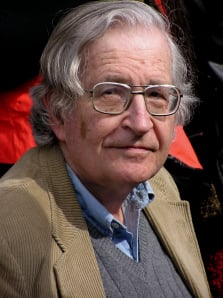
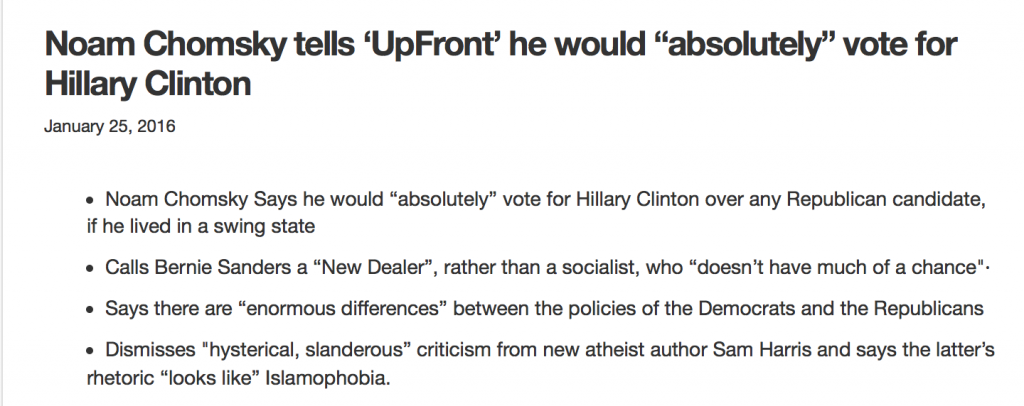




 Although the Wikileaks transcript dates the email as December 31, 2000, this is an error on their part, as the contents of the email (in particular the reference to May 2012 talks between Iran and the west over its nuclear program in Istanbul) show that the email was in fact sent on December 31, 2012.
Although the Wikileaks transcript dates the email as December 31, 2000, this is an error on their part, as the contents of the email (in particular the reference to May 2012 talks between Iran and the west over its nuclear program in Istanbul) show that the email was in fact sent on December 31, 2012.
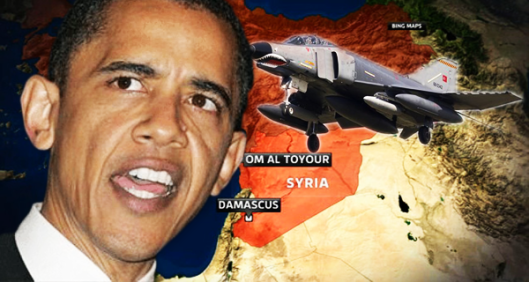



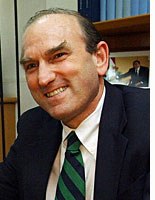


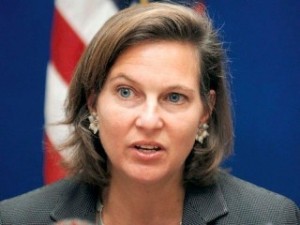
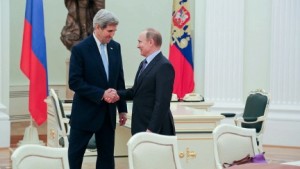

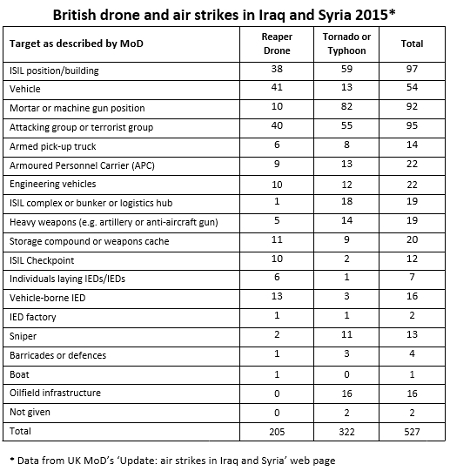 While there are likely to be a large number of dynamic strikes during a conventional ‘hot battlefield’ situation such as that taking place in Iraq and Syria, that fact that only 5% of UK strikes are pre-planned is extremely surprising. As if to pre-empt questions, in its response letter the MoD argues that
While there are likely to be a large number of dynamic strikes during a conventional ‘hot battlefield’ situation such as that taking place in Iraq and Syria, that fact that only 5% of UK strikes are pre-planned is extremely surprising. As if to pre-empt questions, in its response letter the MoD argues that













